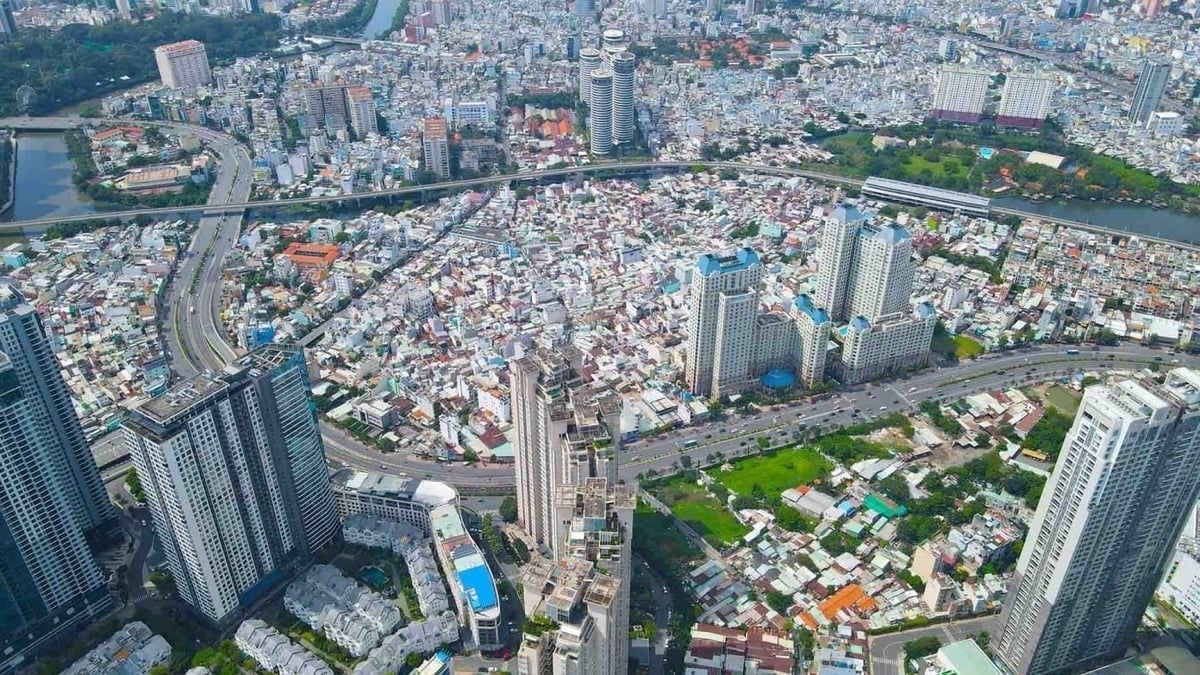November 10, 2025 | 14:18 GMT +7
November 10, 2025 | 14:18 GMT +7
Hotline: 0913.378.918
November 10, 2025 | 14:18 GMT +7
Hotline: 0913.378.918
For generations, land has been regarded as a priceless resource, a special production material, and an indispensable element in the nation-building and safeguarding process. Over the past 80 years, Vietnam’s land management sector has continuously matured, making significant contributions to socio-economic development. Throughout this journey, land statistics and inventory have remained an effective management tool, enabling the State to firmly grasp land funds, rationally allocate, and efficiently utilize this immense resource.

Land statistics and inventory have always played a role as an effective management tool, enabling the State to firmly grasp, rationally allocate, and efficiently utilize this immense resource. Photo: Minh Hoang.
According to Mr. Pham Ngo Hieu, Deputy Director General of the General Department of Land Administration, with a natural area of more than 33.1 million hectares and a population of over 100 million, Vietnam’s per capita land area is relatively low compared to the global average. In the context of accelerating urbanization, industrialization, and increasingly severe climate change, land demand is growing sharply. This makes the organization of land statistics and inventory an urgent requirement to ensure food security, foster industrial and service development, and protect the environment.
Through land statistics and inventory, it is clear that land management in recent years has significantly contributed to mobilizing land resources for Vietnam’s strong economic structure transformation. Specifically, within just two decades (1990–2010), about 11 million hectares of unused land were brought into production, primarily for afforestation. This effort contributed to ecosystem restoration and created livelihoods for local communities. As a result, the area of unused land dropped sharply, from nearly 15 million hectares in 1990 to just 1.17 million hectares by 2024.
Agricultural land has been allocated rationally, ensuring national food security. The area of perennial crop-farming land has grown by more than 34% compared to 2010, expanding from 3.68 million hectares to over 4.92 million hectares today. Thereby making an important contribution to agricultural exports, with the fruit and vegetable export value in 2024 estimated to reach over USD 7.12 billion.
Meanwhile, non-agricultural land has seen significant changes. Urban residential land has increased by 57% over the past 15 years, reflecting rapid urbanization. Particularly, the area of land allocated for public works rose by 43%, making a significant contribution to infrastructure development and the improved quality of people's lives.
The increased allocation of land funds for non-agricultural purposes fully reflects the country's economic structure transformation. It contributes to the fulfillment of socio-economic tasks, ensures social security, and substantially contributes to the state budget. In 2024, total State budget revenue reached VND 2,037.5 trillion, with land-use fees accounting for VND 230.2 trillion.
According to Mr. Hieu, the results of land statistics and inventory over different periods have painted a clear picture of Vietnam's remarkable progress in unlocking land resources. The people and businesses have gained greater access to land resources thanks to increased transparency in administrative procedures and a series of legal reforms, which the land management sector has proactively, creatively, and flexibly proposed and promptly implemented.

Land inventory has been implemented nationwide since August 1, 2024. Photo: Nguyen Nga.
However, land statistics and inventory have also revealed several shortcomings that need to be addressed. Specifically, land management still suffers from waste and losses. International experience shows that more than 80% of socio-economic management decisions rely on geospatial data, highlighting the urgent need for Vietnam to accelerate digital transformation in this field.
As the entire Party and population enter a new phase of development, land statistics and inventory must continue to be modernized with robust application of digital technology, artificial intelligence, digital mapping, and remote sensing. These innovations are the foundation for strict, public, and transparent land management, ensuring equitable allocation and economical, efficient, and sustainable use of this vital resource. They also help prevent losses, corruption, and group benefits in land management and use, which are issues of constant concern for the Party, the State, and the people.
With high political determination, the support of the people and businesses, and the power of digital transformation, the land management sector will undoubtedly continue to build on its tradition, pursue comprehensive reforms, and turn land statistics and inventory into a pillar of modern, transparent, and effective land management, serving the sustainable development of the nation.
* USD 1 = VND 26.158 (Source: Vietcombank)
Translated by Thu Huyen

(VAN) Rural tourism is emerging as a dual driving force, both promoting sustainable agricultural development and contributing to the creation of modern, civilized new rural areas.
![Clean data - Bright trust [Part 5]: Lessons from the grassroots](https://t.ex-cdn.com/nongnghiepmoitruong.vn/608w/files/news/2025/11/09/anh-chup-man-hinh-2025-11-09-204608-nongnghiep-205148.jpeg)
(VAN) Practical lessons drawn from the grassroots, wards and communes, have been further applied and promoted by Dong Nai province as it accelerates efforts to complete the 90-day campaign to update the land database.
![Clean data - Bright trust [Part 4]: Determination to let the people benefit](https://t.ex-cdn.com/nongnghiepmoitruong.vn/608w/files/news/2025/11/08/anh-chup-man-hinh-2025-11-08-071842-nongnghiep-071859.jpeg)
(VAN) Hai Phong City is determined to enrich and clean its land data, aiming for transparent management, streamlined procedures and direct benefits for the people.

(VAN) Viet Nam is proactively adapting to climate change, improving its institutional framework, fostering innovation, and strengthening international cooperation to achieve net-zero by 2050.

(VAN) Vietnam promotes integrated management of seas and oceans, institutional improvement, innovation, and international integration, aiming to become a prosperous and sustainable maritime nation.

(VAN) Khanh Hoa Province is rapidly transitioning to high-tech marine aquaculture to adapt to climate change and enhance the value and output of its seafood.

(VAN) As the world marks the 80th anniversary of the United Nations, progress in ending hunger — the world's most solvable problem - is falling behind.